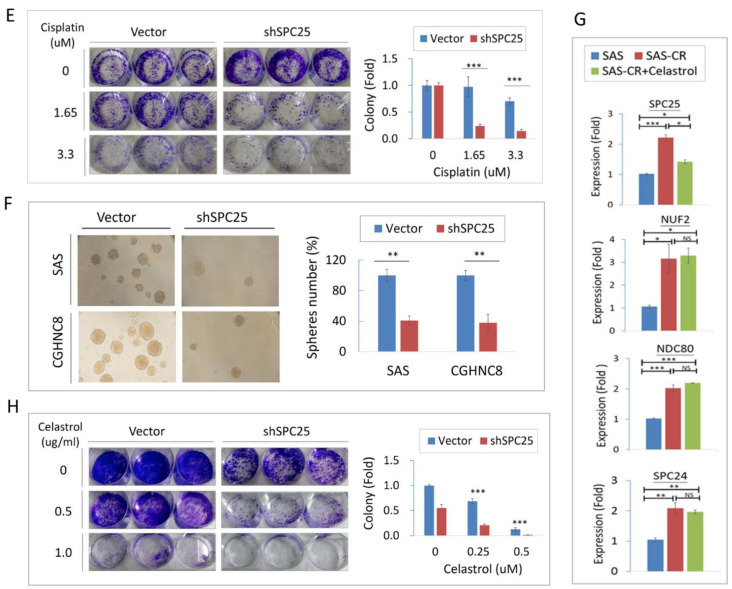Figure 6.
Silencing kinetochore protein spindle pole body component 25 (SPC25) contributes to cisplatin resistance. (A) Schematic diagram of the microtubule–kinetochore interface and NDC80 kinetochore complex proteins. (B) The expression level of NDC80 complex proteins (NDC80, NUF2, SPC24, and SCP25) in parental and CR cells as examined by RT-qPCR. (C) Reduction in SPC25 expression in SPC25-specific silencing cells. After transfection of SPC25-specific shRNA plasmids or the vectors, the stable transfected cells were selected by using G418. The efficiency of SPC25 silencing was verified by the protein expression as determined by Western blotting. The level of GAPDH expression was used as an internal control to determine relative protein expression. The effect of SPC25 silencing (shSPC25) on the cisplatin sensitivity as determined using survival, as determined by (D) MTS survival, or (E) colony formation assays in SAS cells. (F) The effect of SPC25 silencing (shSPC25) on cancer stemness as determined by tumorsphere assay in SAS and CGHNC8 cells. (G) The specific effect of celastrol on the inhibition of SPC25 expression in SAS-CR cells. The SAS cells were treated with 0.5 μM c celastrol, and the gene expression level was performed by RT-qPCR. (H) Effect of growth suppression by celastrol and SPC25-silencing. The shSPC25 or the vector-transfected SAS cells were treated with various doses of celastrol, and cell colony formation was determined after 7 days. p-values indicate statistical significance (* p ≤ 0.05, ** p ≤ 0.01, *** p ≤ 0.001).


